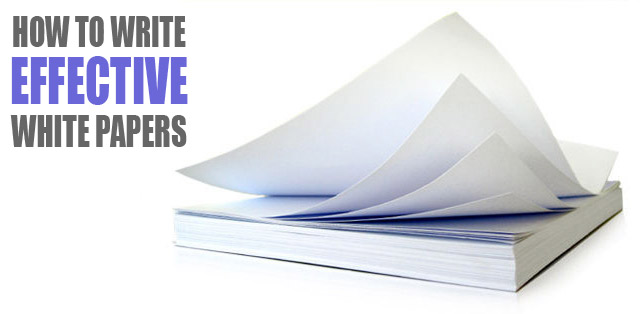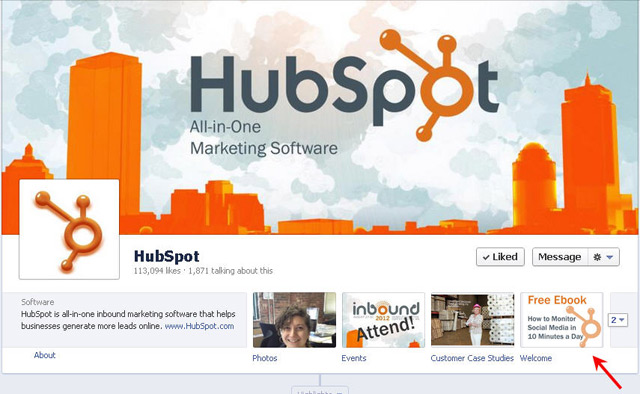How to Write Effective White Papers and Use Them to Promote Your Business

A white paper is a cross between a long educative magazine article and a short persuasive brochure. The combination of education and persuasion makes it one of the most powerful marketing tools.
As 80 to 90% of the white paper usually consists of helpful information and only 10 to 20% of the white paper consists of promotional information, clients like reading white papers. They read the white paper to educate themselves with the helpful magazine part of the white paper. But the client ends up reading the persuasive brochure part of the white paper too, as the educative section helps display your expertise – this convinces them to read the brochure section and find out more about your company (the expert). If your brochure section of the white paper is written the right way clients will want to use your services or buy your products.
So how do you create effective white papers that generate leads?
If you’re keen on learning how to write effective white papers then you have to read the tips below.
As I mentioned above a white paper can be divided into two parts the magazine part and the brochure part. Let’s get started with writing the magazine part of the white paper:
Writing the magazine part:
The magazine part of the white paper can be further divided into 6 parts:-
1. Headline:
The magazine part starts off with an attention grabbing headline. You need to make sure your headline attracts attention and persuades the reader to read the rest of the white paper. The headline is one of the key components of a white paper. As white papers are usually 7 to 14 pages long and sometimes a lot longer – you need to make an effort to convince your audience to read it in the fewest words possible. If you want to convince your busy reader to invest their time in reading your white paper you need to make sure you write a good, short headline.
A well written easy to read short headline can help persuade busy people to read your white paper.
The best headlines are those that mention a benefit and generate curiosity and are less than 16 words long.
2. Sub-headline:
Many people forget to add the sub-headline to their white papers. For long detailed documents like white papers the sub-headline plays an important role. There might be a lot of information you would like to include in your headline, but you usually can’t, as I mentioned you need to keep it short. This is what makes the sub-headline so important.
In the sub-headline you can include information you weren’t able to include in the headline. Here you can expand on the headline and write more about the benefit you mentioned in the headline or you can just give more information about the white paper. Keep the headline as short as the main headline. More information about the white paper can be mentioned in the introduction.
3. Introduction:
After writing the headline and the sub-headline you can write the introduction to the white paper. In the introduction summarize the contents of the white paper. Let the reader what the white paper contains. Write down the problems and solutions you plan to discuss in the white paper and how they can make use of the information learnt to better their business.
Your aim here is to convince the reader that they will find the white paper helpful and that they need to read the rest of it. So focus on this aim while writing the introduction. But make sure not to give away too much information, as you want the reader to read the rest of the white paper to find out more.
4. Problems:
After you finish writing a short introduction, you can write the problems section of the white paper. In the problems section of the white paper you need to write down all the problems faced by your readers, as this what your audience wants to read out. Here you need to write down the problems your product or service helps solve without mentioning anything about your product or service.
First start the section with a sub-heading and follow it up with a short introduction. After this list the problems one by one and discuss them in detail. After you finish discussing all the problems write down a conclusion which leads to the solutions section of the white paper.
5. Solutions:
You can write the solutions section of the white paper after you have explained the problems in detail. Write it in a similar way in which you have written the problems section. Start with a sub-headline, follow this with an introduction and then discuss all the solutions in detail and end it with a paragraph that sums up all the solutions.
The solutions you provide here should help solve the problems you discussed in the problems section. These solutions should be similar to the solutions provided by your services and products.
Note: While writing the headline, sub-headline, introduction, problems and solutions you need to avoid writing anything about your company. These sections should be strictly educational and have no promotional messages.
6. Conclusion:
You need to end the magazine section of the white paper with a conclusion. In the conclusion you need to let your reader know that they can now try out the solutions mentioned in the solutions section or they could try out your product or service that provides the same solution. Let the reader know that more information about the service is available in the next section (the brochure part of the white paper).
The conclusion needs to lead the reader from the magazine section to the brochure section. It needs to bridge both the sections together. The conclusion is the only section in the magazine part of the white paper where you can give some information about your company.
Writing the brochure part:
If your readers find the information they received from your white paper helpful and if you did a good job by ending it with a good conclusion, your clients will want to read the brochure part of the white paper to find out more about you and your products and services. So if you want to take advantage of this opportunity then make sure you write a good persuasive brochure.
The brochure section of the white paper can be divided into four parts:
1. The headline:
The headline for the brochure section can just be the name of the company or it can be a longer more attractive headline.
2. Company information:
After the headline you can write a small paragraph about the company that created the white paper. Write about when the company was founded, what sort of services they provide, etc. Keep it really short – it should be less than 4 or 5 lines.
3. Product/Service Information:
After you have described the company in detail you can start writing about the product or service that offers the solution in detail. Start off with a brief description about the product and then list the benefits of using this product or service. Make sure you list them all – they need to relevant to the solutions you discussed in the magazine part of the white paper.
4. Call to action:
After you have mentioned all the benefits of using the product or service you can end the white paper with a call to action which asks the reader to contact you to find out more – you could give them your email address or your phone number, you could also provide a link to your website. It needs to be a subtle call to action not too direct like the ones found in direct marketing material.
That’s how you end the white paper, with a good call to action.
If you follow the above steps you should be able to create a powerful white paper with which you can take advantage of all the benefits listed below:
1. To generate leads:
As mentioned above a white paper can be used to generate leads. If you can write a helpful white paper which provides tips on solving the same problems that your product or service (which you write about at the end of the white paper) does, then your white paper can do its job of generating leads.
2: To spread expertise:
The aim of the white paper doesn’t have to always be to sell a product or to generate leads. A white paper can also be used to spread expertise. By writing about the problems faced by your reader and the perfect solutions to solve these problems you can help your audience solve their problems. At the end of the white paper instead of trying to sell a product or service you can just write about the company that produced the white paper.
This will show the reader that the company is an expert in that field. This will help build a good brand image and a better relationship with the reader, as the reader will begin to trust your expertise in the field. This can help you indirectly generate leads as people like working with experts.
3. To build a mailing list:

A white paper can also be used to build a good mailing list. Normally it can be hard to convince people to sign up to a newsletter, just to receive your blog updates, but with a free gift in the form of a white paper, convincing people to sign up can be easy. All you will need to do is let your website visitor know that they will get a free white paper if they sign up to your newsletter.
4. To get more facebook “likes”:
Before the facebook timeline pages were introduced, the best way to get many “likes” was by having a landing page. But with the introduction of timelines you’re not allowed to have a landing page, but a cover which doesn’t have a message that asks the reader to like your page. This can decrease the number of like you get.
With the new facebook timeline, one of the best ways to increase likes on your timeline profile page is to have 810 px custom tabs with which you can fan gate your page. Fan-gating your page with a white paper can really increase the number of likes you get. Let people know that they can only get access to the white paper after they have liked your page. This can help you get a lot of facebook likes and a lot of subscribers who sign up for the white paper.
As you can see in the above picture Hubspot fan-gate their facebook page with a document which helps them get more likes, as people have to like their page in order to get access to that document.
If you write a good white paper you can take advantage of all the benefits which have been mentioned above and get the most out of the white paper.
Have you ever written a white paper? How did you use it? Have you got any tips you would like to share with us? Please leave your comments in the comments box below.
About the Author: Mitt Ray is a white paper writer. He blogs about white papers on The White Paper Blog, where you can download his free white paper on How to Write a White Paper. He is the author of the book White Paper Marketing. You can follow him at @MittRay.

